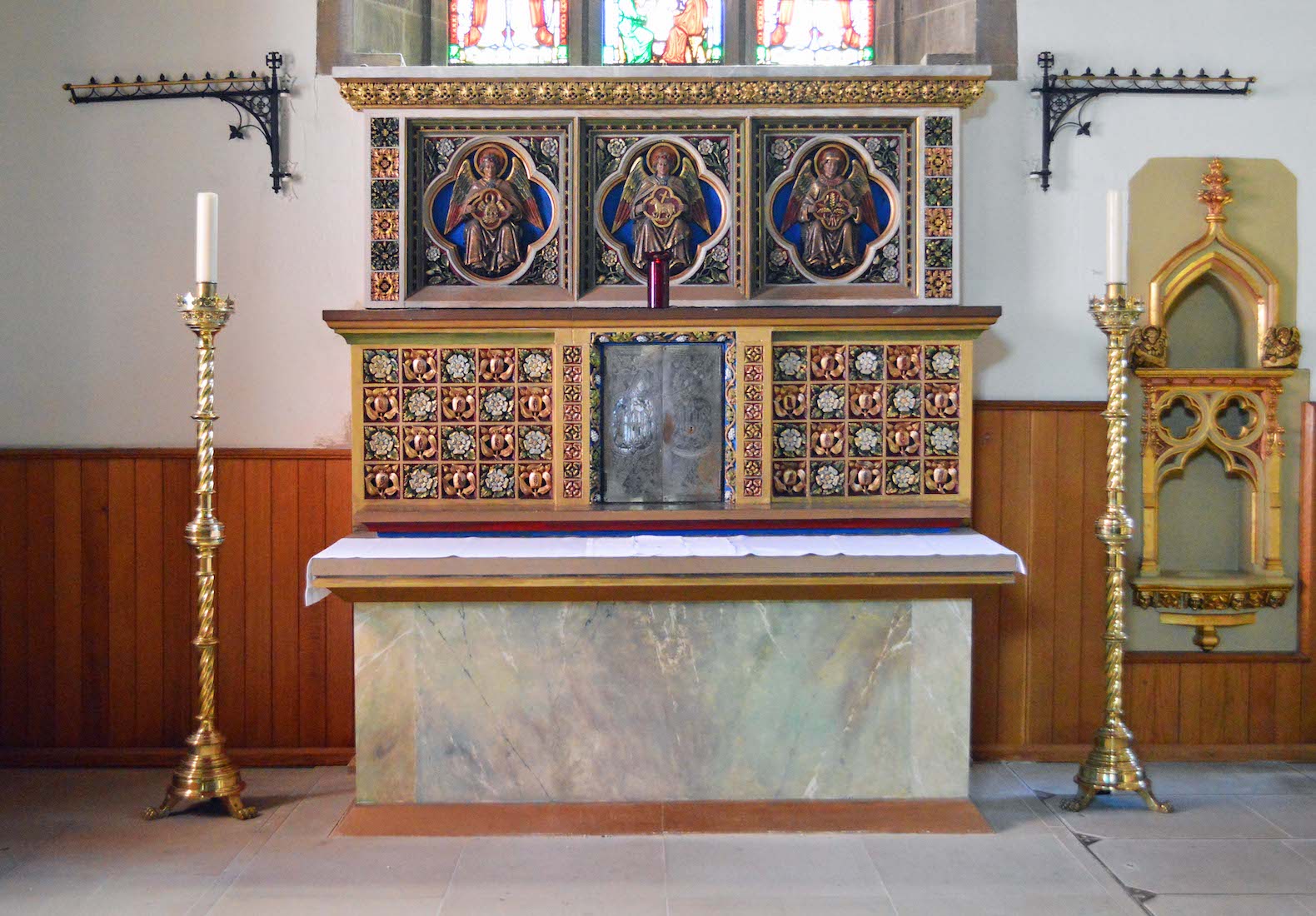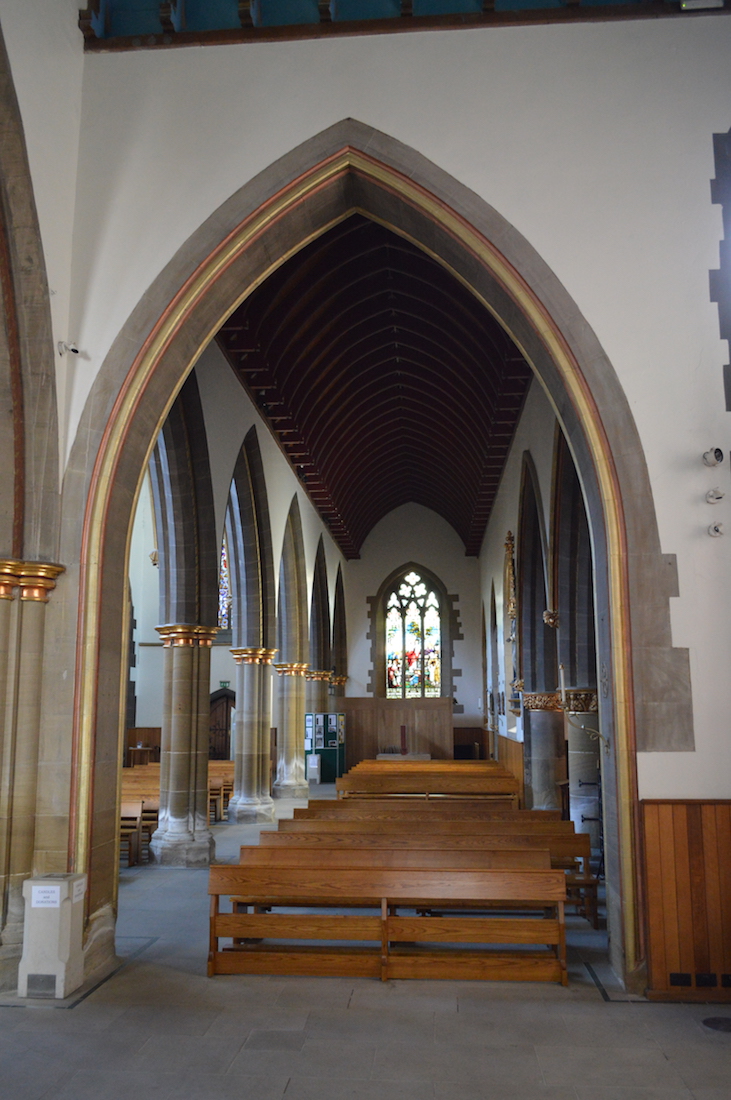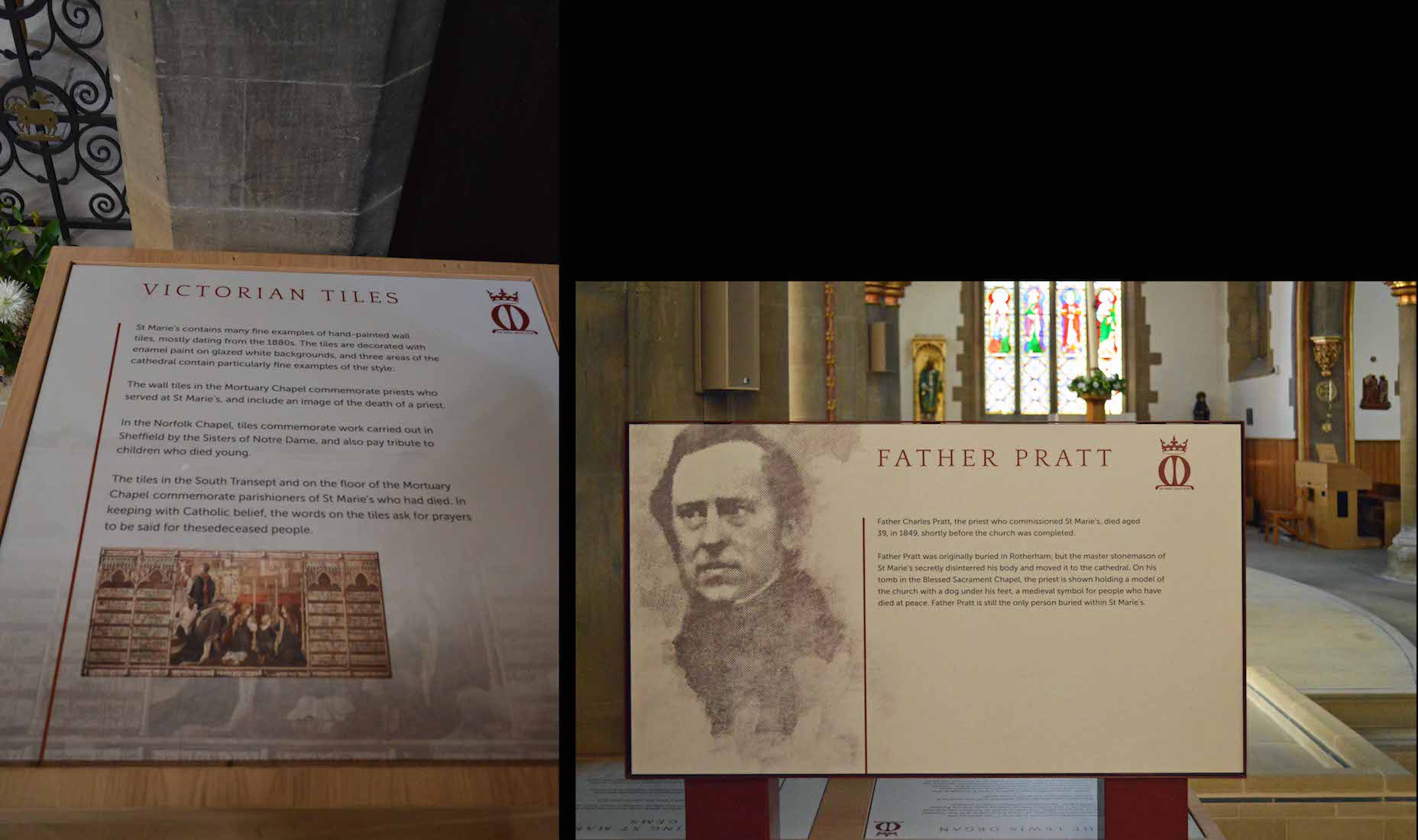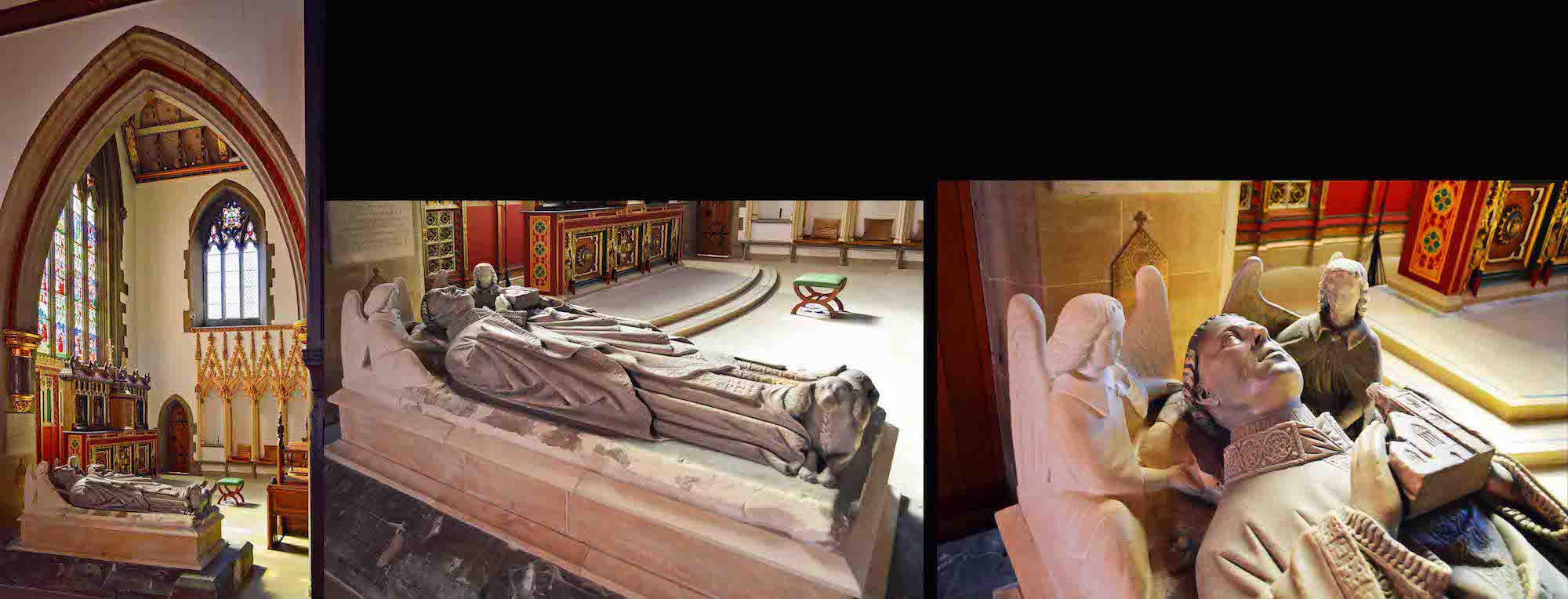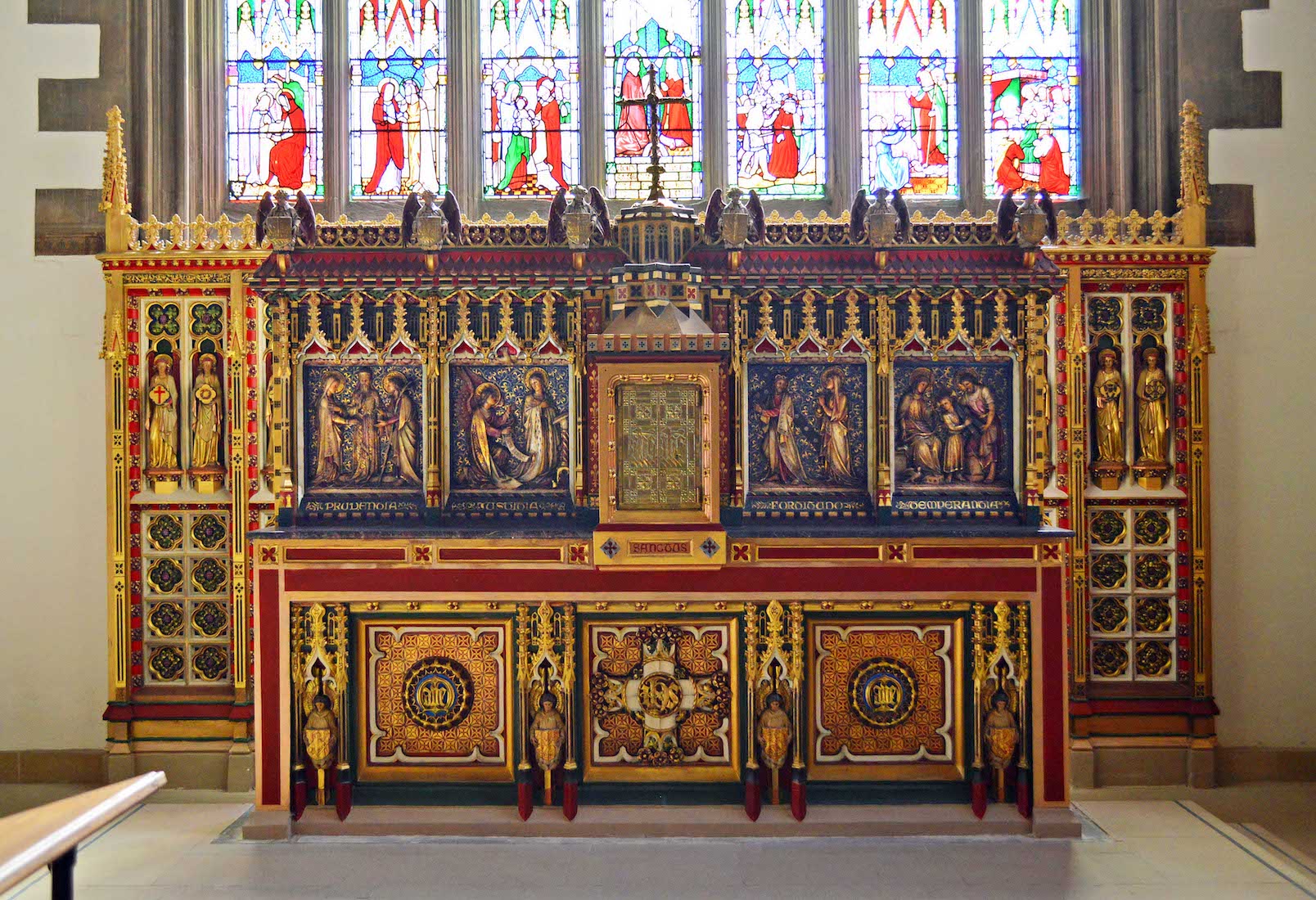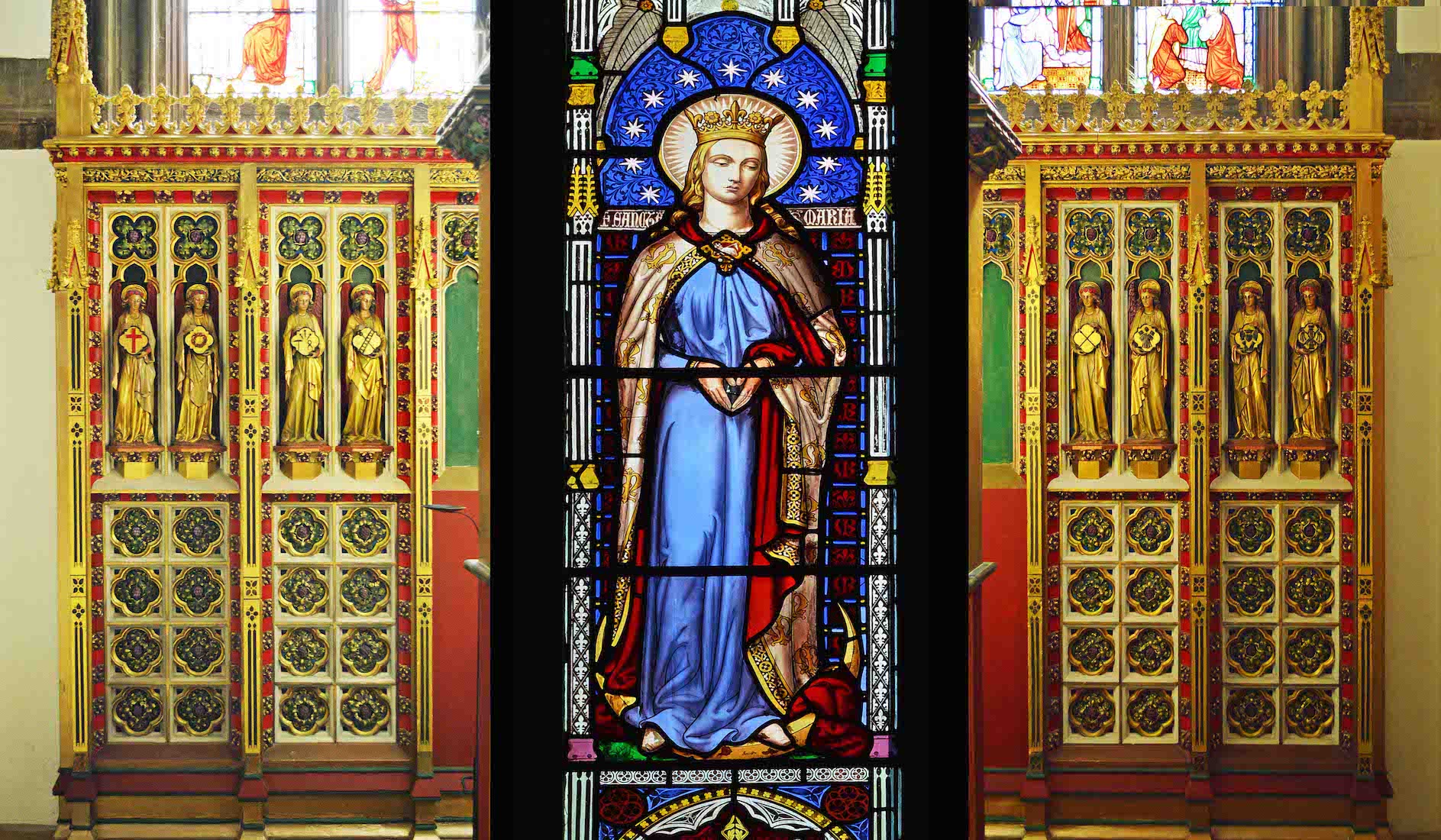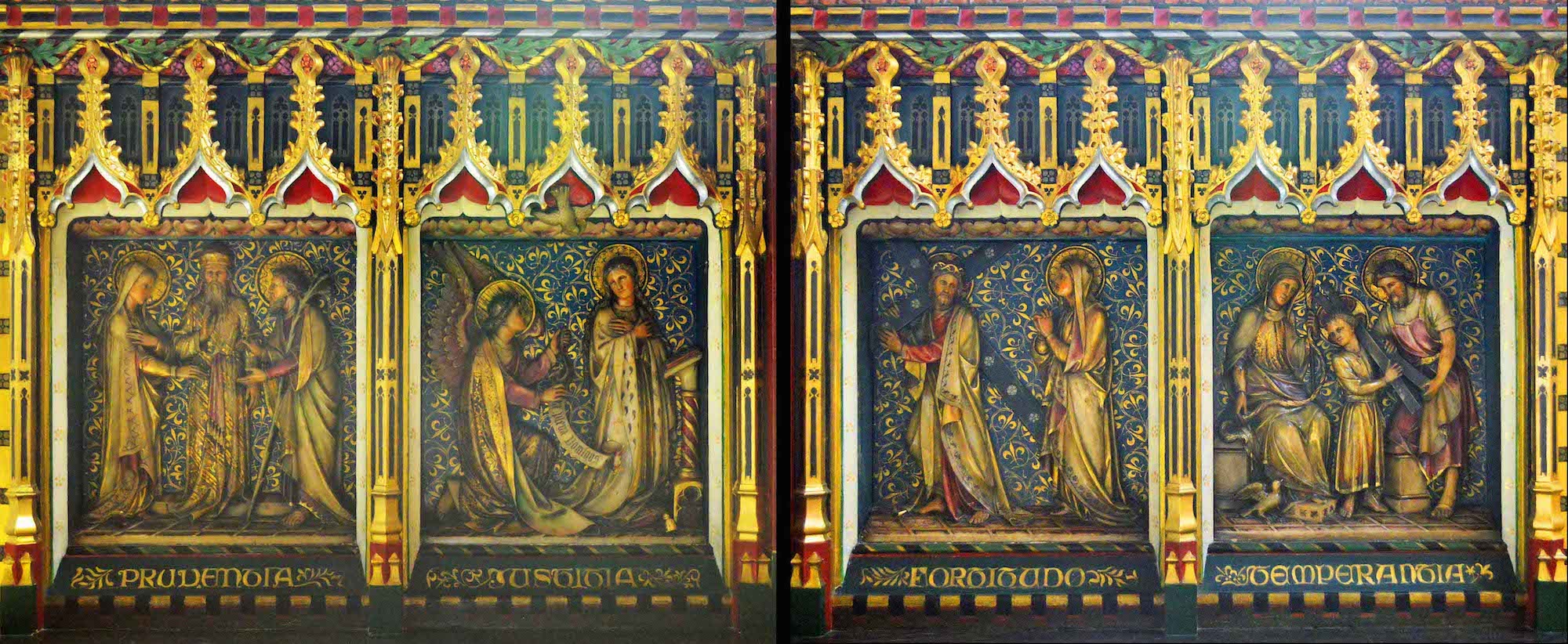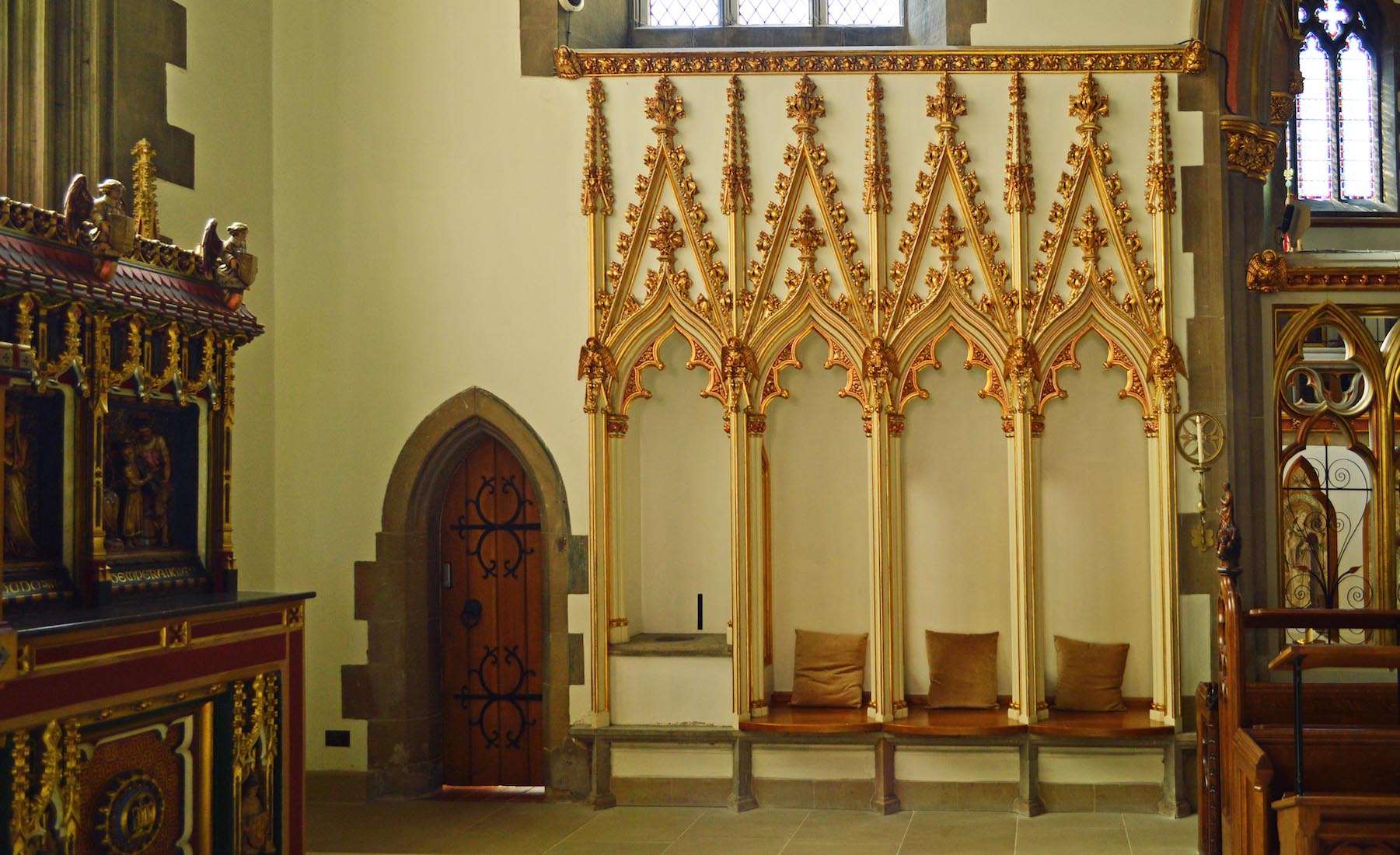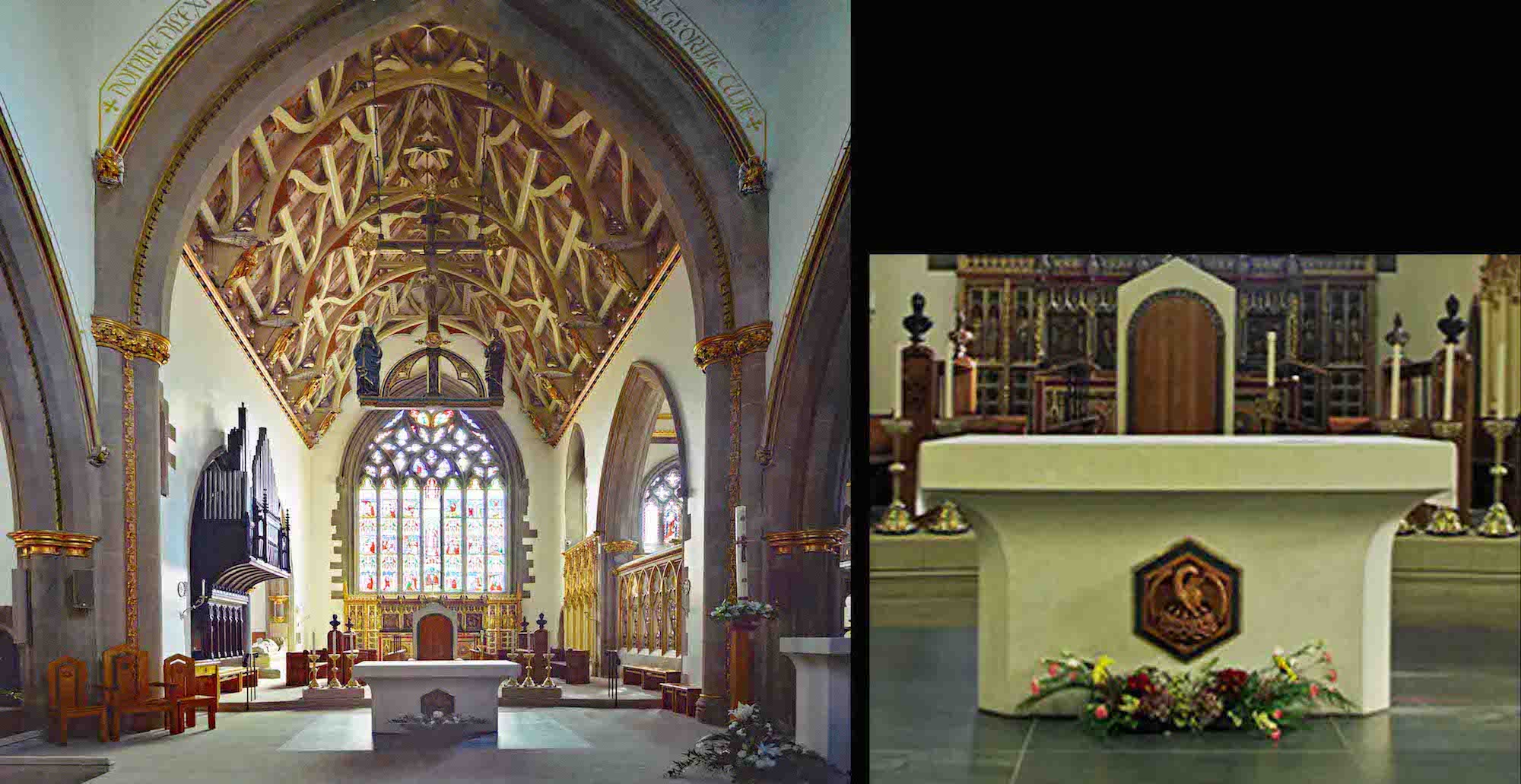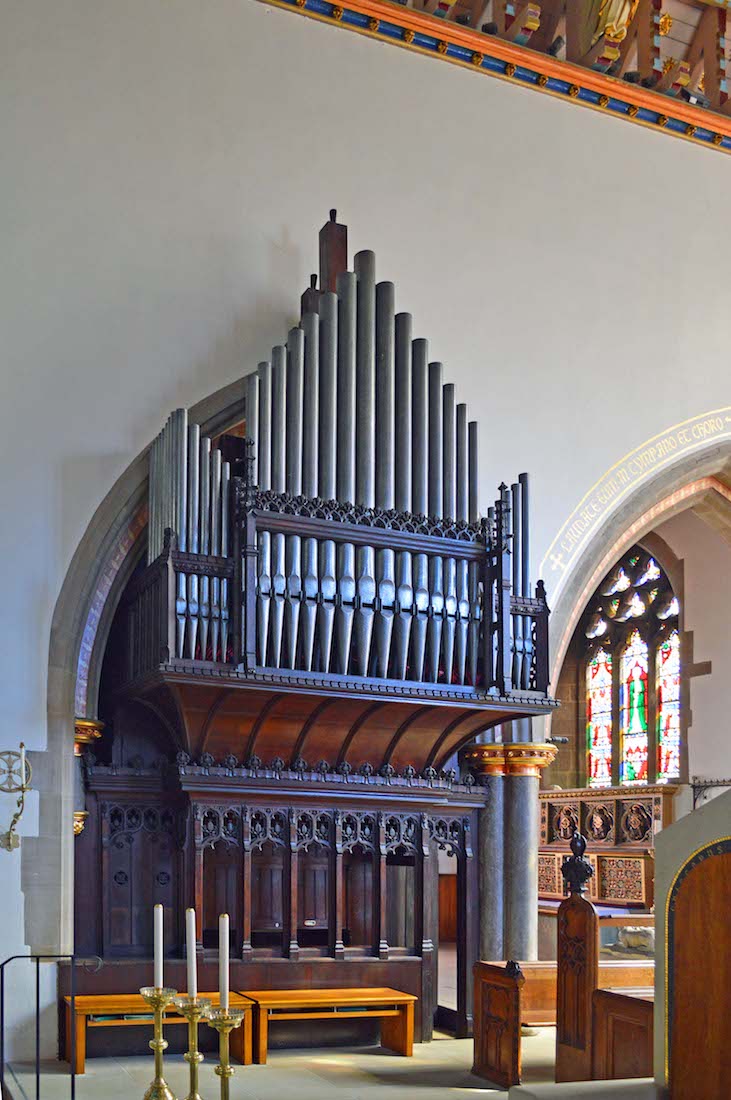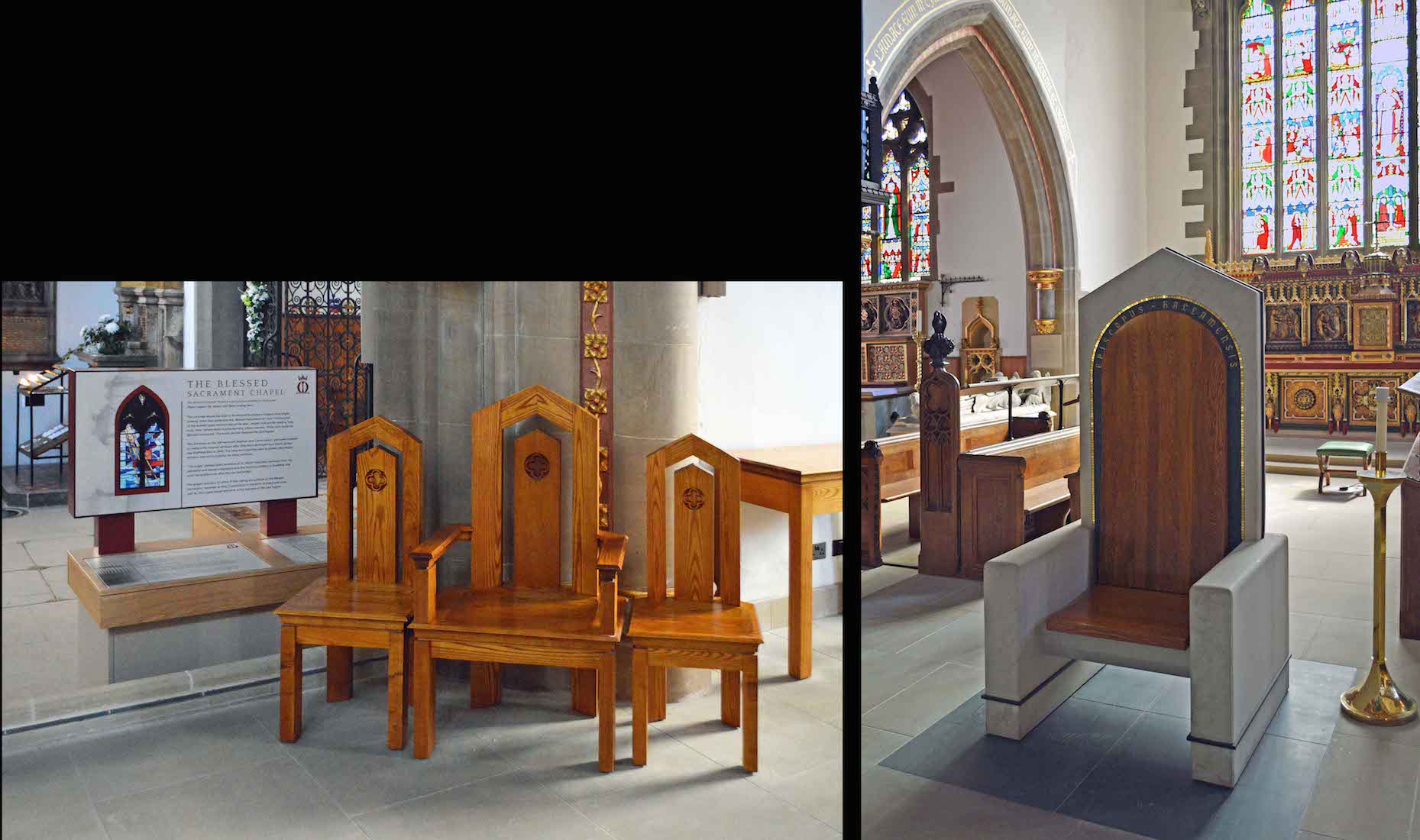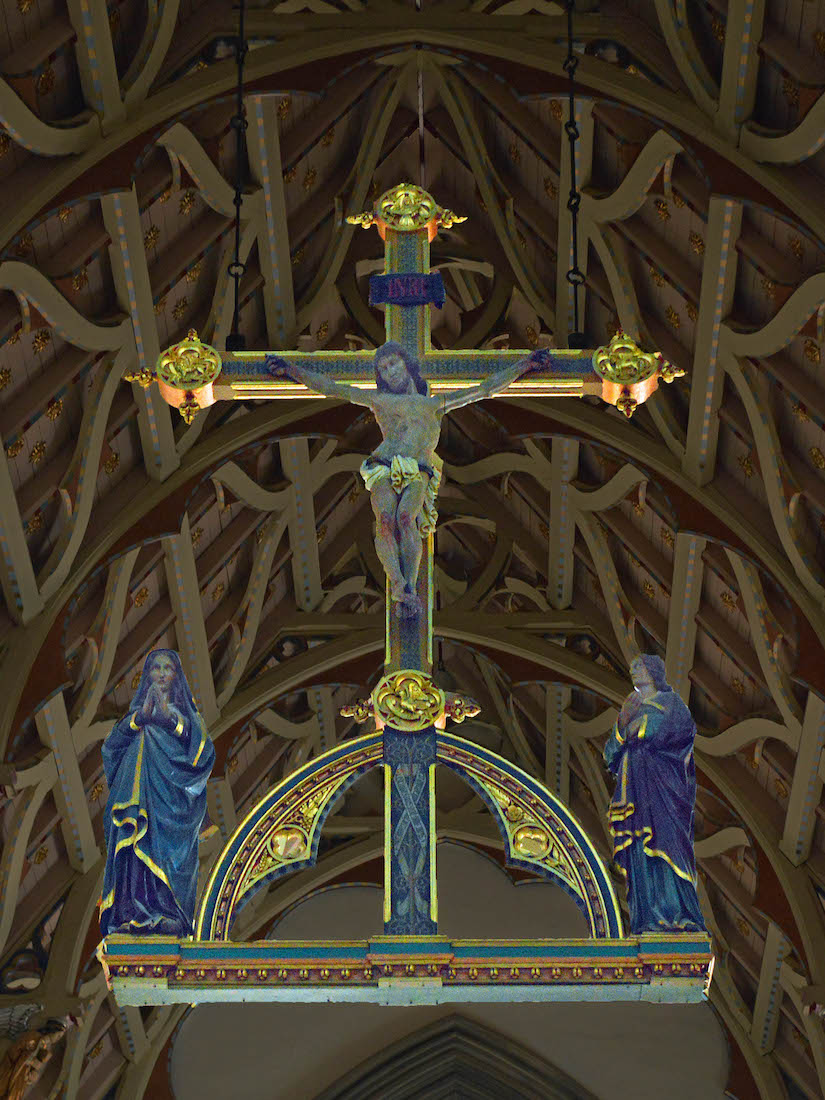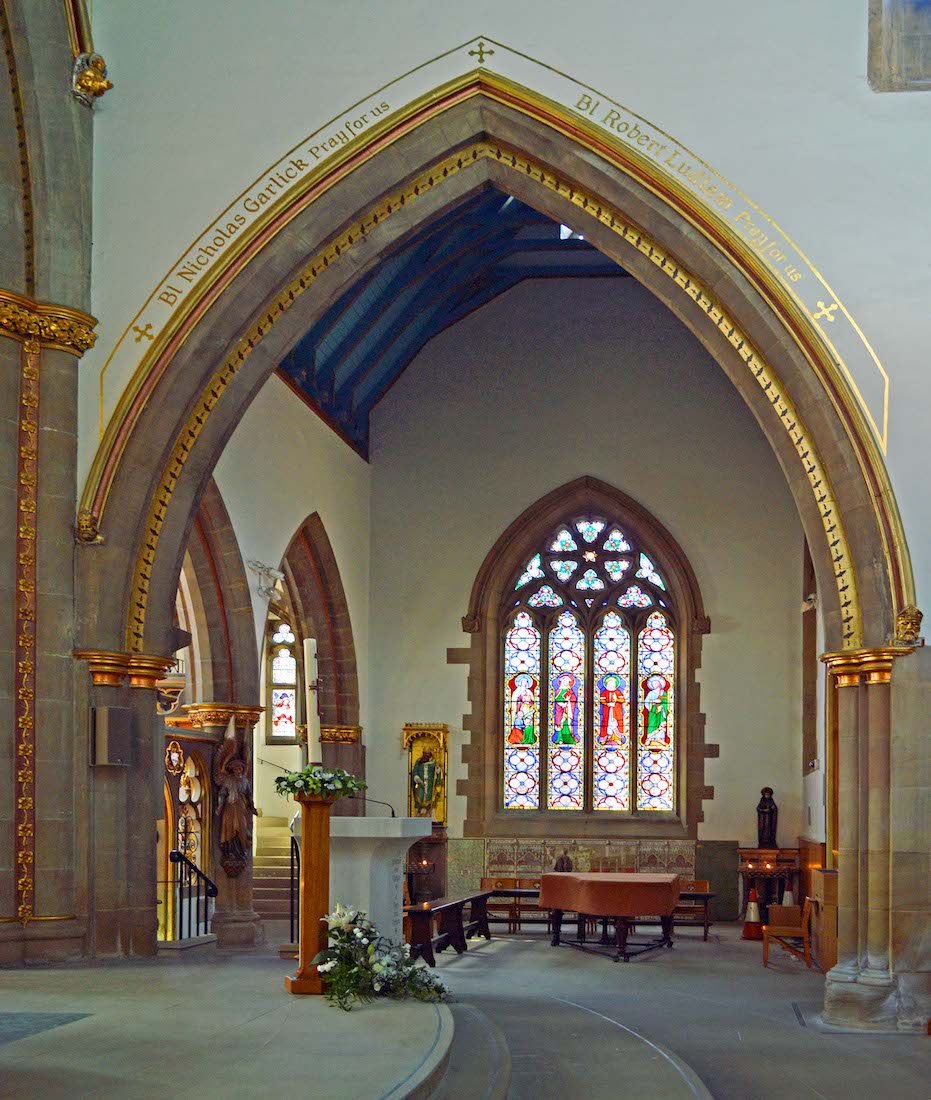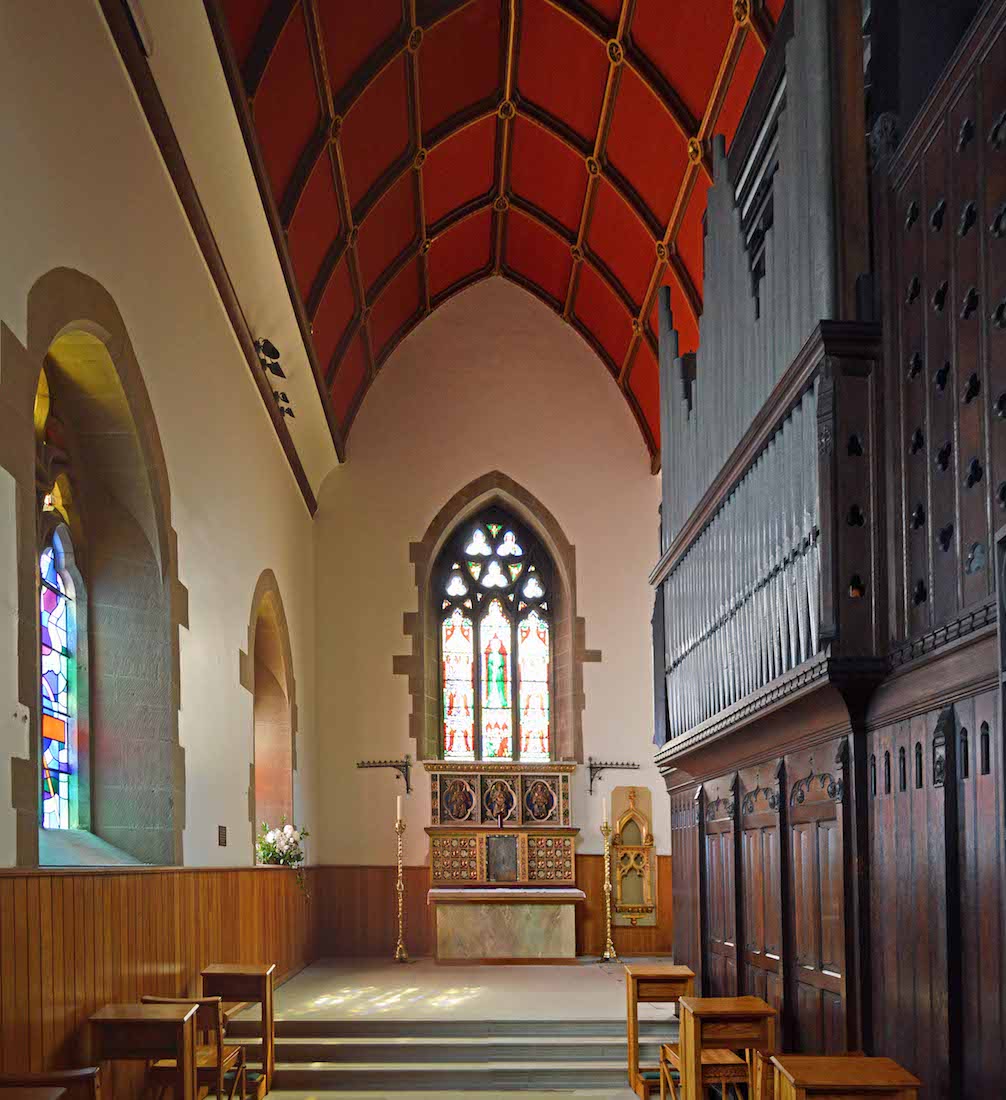
The Chapel is somewhat elongated with the organ impinging on the seating/praying area from the right. The Chapel has three stained glass windows, and steps leading up to an altar at the East end. PLAN
42. CHAPEL WINDOWS
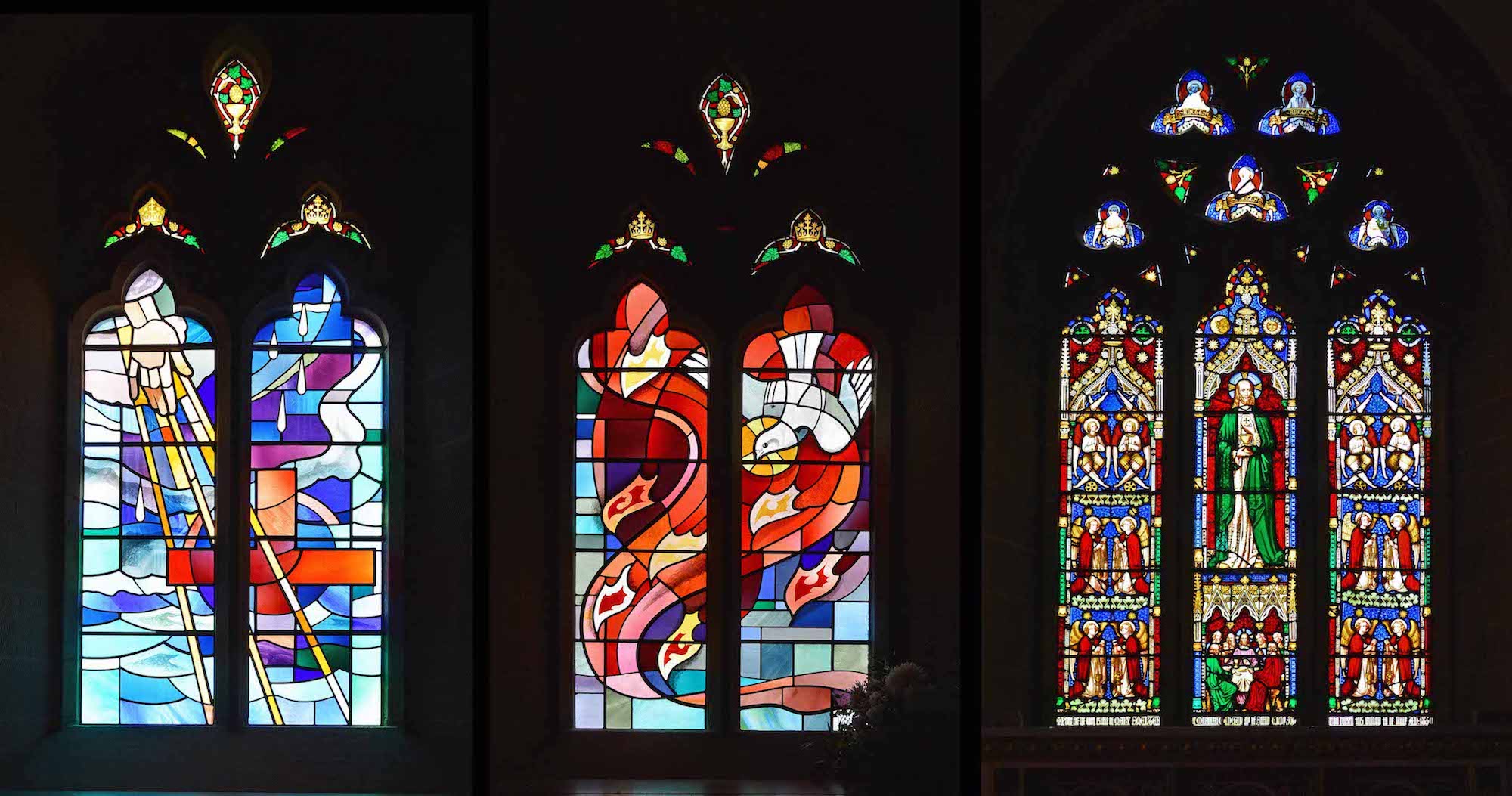
The two windows in the North wall are modern, replacing those burnt out in a 1940 air raid. They represent the sacraments of initiation: baptism and confirmation. In the East window above the altar, three angels hold scrolls which say ‘holy’. Christ is shown holding host and chalice, with the sun and moon paying him homage. Below him is a picture of the Last Supper.
43. CHAPEL ALTAR
The carvings above the altar show angels with symbols of Christ’s sacrifice and death: the Lamb of God, the pelican pecking at its own breast to feed its young, and ears of wheat cut down to provide food. The tabernacle below is set in an ornate floral panel..
44. VIEW BACK ALONG THE NORTH NAVE
Looking back from the Blessed Sacrament Chapel, we can see the length of the nave along the North aisle.
45. INFORMATION BOARDS
This Cathedral has a number of useful information boards. This left board gives information about the various tilings which are a feature of St Marie‘s. The right panel tells about Father Charles Pratt, the priest who commissioned St Marie’s, and who died in 1849, aged 39, only months before his church was completed.
46. FATHER PRATT EFFIGY
The effigy of Fr Charles Pratt who was the driving force behind the building of the church is between the Chapel of the Blessed Sacrament and the chancel. The priest is shown between two angels, holding a model of the church, and has a dog under his feet – a medieval symbol for people who have died at peace. Father Pratt is the only person buried within St Marie’s.
48. HIGH ALTAR
We are now in the sanctuary. Before us is the high altar with the Great East Window above. The stone altar reredos was designed by Pugin.
49. EAST WINDOW
The centre panel of the Great East Window shows Mary as described in the Book of Revelation, as a woman clothed with the sun, standing on the moon, and crowned with a halo of twelve stars. The 18 scenes show the life of Mary and need to be read in columns starting from top left. In the tracery above is a complex depiction of Heaven with the Trinity at top centre.
50. DETAILS OF THE REREDOS AND EAST WINDOW
The centre panel shows detail of the depiction of Mary in the central lancet in the Great East Window. Also shown here are the outer panels of the reredos with angels honouring Jesus and holding the instruments of his passion and death.
51. HIGH ALTAR PANELS
The square carvings record the virtues of prudence, justice, fortitude and temperance, exemplified by scenes from the life of Mary.
52. SANCTUARY SEDILIA
On the South wall is a three seater sedilia, picked out with gold paint. These are seats where the clergy sit during parts of the Mass when it is formally celebrated. The carving is based on the 14th century sedilia at Heckington. Angels in the design represent stages in the formation of a priest. For a more general view of the sanctuary and chancel, we now move back to the crossing.
53. CHANCEL AND SANCTUARY, NAVE ALTAR
So many things to notice here! The Paschal candle at our right; the nave altar just in front of us, and the organ further back at left; the clergy chairs at left and the cathedra behind the nave altar; the gilded heads at the bottom of the arches – a continuing theme; and above us the amazing sanctuary roof and rood cross. The modern altar is made of Polish sandstone, and bears the well known pelican image. It contains the relics of many saints.
54. ORGAN
The organ is a Thomas Lewis tracker organ with 1700 pipes, built in 1875. The Austrian oak case was designed by John Bentley and carved by James Erskine Knox. The organ has recently been restored.
55. CLERGY CHAIRS AND CATHEDRA
To our left are more chairs used by the clergy during the celebration of Mass. Directly behind the nave altar is the Bishop’s chair, or cathedra. This symbol of the Bishop’s authority gains its name from the Latin word for seat or throne, and its presence is what makes this church a ‘cathedral’.
56. HIGH HEADS
These high gilded heads can be seen throughout the Cathedral. The heads pictured here are of St Teresa , St Cuthbert and St Edward, and St Gregory.
57. SANCTUARY ROOF
There is an elaborate wood ribbed ceiling above the chancel with gilded angels. There is a theme of the heavens here with many suns, moons and stars – relating well to the themes of the Great East Window.
58. ROOD CROSS
Hanging from the ceiling is a large Rood Cross with the crucified Christ, and beneath, the Virgin Mary and St John. The word ‘rood’ is an archaic word for ‘pole‘ which described many early crosses. The alternative term ‘triumphal cross’ which is more usual in Europe, signifies the triumph that the resurrected Jesus Christ won over death.
59. SOUTH TRANSEPT
Leaving the sanctuary and chancel, we now turn to the South transept. The main window is flanked by two images, and has painted tiling below. There is a further window in the West (right) wall. In the foreground stands the ambo from which the scripture is read. On the front are inscribed the words: ‘In the beginning was the word. The word was God. The word was made flesh.’
60. ACCESS TO CHAPELS
To the left of the South transept is access to two further chapels. We shall explore these shortly after examining the transept. The doorway to the left leads to the St Joseph’s (or Norfolk) Chapel. The staircase to the right leads up to the Lady Chapel


